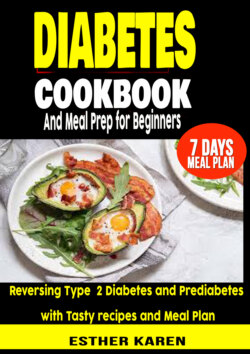Читать книгу Diabetes cookbook And Meal Prep for Beginners - Esther Karen - Страница 9
На сайте Литреса книга снята с продажи.
Arresting hidden sugar in foods
ОглавлениеBeing smart with your sweets is only part of the battle. Sugar is also hidden in many packaged foods, fast food meals, and grocery store staples such as bread, cereals, canned goods, pasta sauce, margarine, instant mashed potatoes, frozen dinners, low-fat meals, and ketchup. The first step is to spot hidden sugar on food labels, which can take some sleuthing:
Manufacturers provide the total amount of sugar on their names but do not have to differentiate between added sugar and sugar that is naturally in the food.
Added sugars are listed in the ingredients but aren't always easily recognisable as such. While sugar, honey, or molasses are easy enough to spot, added sugar could also be listed as corn sweetener, high-fructose corn syrup, evaporated cane juice, agave nectar, cane crystals, invert sugar, or any fructose, dextrose, lactose, maltose, or syrup.
While you'd expect sugary foods to have sugar listed near the top of their list of ingredients, manufacturers often use different types of added sugars which then appear scattered down the menu. But all these little doses of different sweeteners can add up to a lot of extra sugar and empty calories!
Choose fats wisely
Some fats are unhealthy, and others have enormous health benefits, so it's important to choose fats carefully.
Unhealthy fats. The most damaging fats are artificial trans fats, which make vegetable oils less likely to spoil. Avoid commercially-baked goods, packaged snack foods, fried food, and anything with "partially hydrogenated" oil in the ingredients, even if it claims to be trans fat-free.
Healthy fats. The healthiest fats are unsaturated fats, which come from fish and plant sources such as olive oil, nuts, and avocados. Omega-3 fatty acids fight inflammation and support brain and heart health. Good sources include salmon, tuna, and flaxseeds.
Saturated fats. Found mainly in tropical oils, red meat, and dairy, there's no need to eliminate saturated fat from your diet-but instead, enjoy in moderation. The American Diabetes Association recommends consuming no more than 10% of your daily calories from saturated fat.
Eat regularly and keep a food diary
It's encouraging to know that you only have to lose 7% of your body weight to cut your risk of diabetes in half. And you don't have to count calories or starve yourself to do it obsessively. Two of the most helpful strategies involve following a regular eating schedule and recording what you eat.
Eat at regularly set times
Your body is better able to regulate blood sugar levels-and your weight-when you maintain a regular meal schedule. Aim for moderate and consistent portion sizes for each meal.
Start your day off with a good breakfast. It will provide energy as well as steady blood sugar levels.
Eat regular small meals-up to 6 per day. Eating regularly will help you keep your portions in check.
Keep calorie intake the same. To regulate blood sugar levels, try to eat roughly the same amount every day, rather than overeating one day or at one meal, and then skimping the next.
Keep a food diary
A recent study found that people who kept a food diary lost twice as much weight as those who didn't. Why? A written record helps you identify problem areas-such as your afternoon snack or your morning latte-where you're getting more calories than you realised. It also increases your awareness of what, why, and how much you're eating, which helps you cut back on mindless snacking.
Type 2 diabetes is about ensuring that more glucose gets into the cells. We want to avoid elevated blood sugar levels in the bloodstream; this might because unwanted
Complications and might affect the kidney, nerve, and eye and other cardiovascular cells,
Many foods can be eaten when a situation of type 2 diabetic arises. The diet meal plan includes brown rice, whole wheat, quinoa, oatmeal, fruits, vegetables, beans, and lentils.
Some other foods should be avoided. They include but not limited to processed sugar,
pasta, white bread, flour, and cookies, pastries.
It's also better to supplement with Foods having a low glycemic load (index) since they lead to a slow rise in blood sugar, and they are the perfect alternatives for those with diabetes. When there is proper glycemic control, it aids the prevention of any complication of type 2 Diabetes.
Fats may not show any effect directly on the blood
The sugar they are very vital in delaying the process of carbohydrate absorption.
Protein gives constant energy and has a small effect on
Blood sugar. It maintains keeps blood sugar and aids feeling full after eating's.
Several Protein-packed foods that may be eaten include beans, legumes, eggs, seafood, dairy, peas, tofu, and lean meats, and poultry.
Some examples of Superfoods that you can take are chia seeds, wild salmon, the white balsamic vinegar, the cinnamon, and the lentils.
When planning a healthy meal plan, you need to add more vegetables and little processed sugars with red meat.
